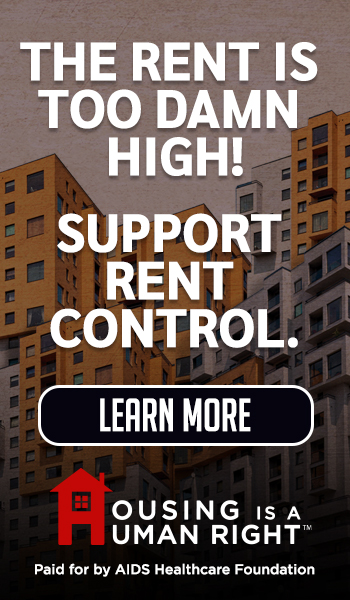Comments
SYSTEM COLLAPSE - When the Palisades and Eaton wildfires tore through Los Angeles County in January 2025, they displaced nearly 13,000 households. In the aftermath, thousands of renters were left scrambling not just for shelter, but for basic legal protections. Their experiences exposed troubling failures in emergency housing response, regulatory enforcement, and long-standing tenant protections.
The disasters didn’t just burn homes—they scorched trust in a system that is supposed to help residents when they need it most.
Rent Gouging in the Shadows of Crisis
While California law prohibits landlords from raising rents more than 10% during a declared emergency, enforcement has historically been weak. After the fires, reports of landlords exploiting desperate renters were widespread. Some were asked to bid on units, while others saw leases go to the highest offer.
Attorney General Rob Bonta warned landlords they could face jail time or $10,000 fines for violating anti-gouging laws. Yet initial enforcement lagged. The City of Los Angeles eventually pledged steeper penalties—up to $30,000—and launched investigations, but only after tenant advocates publicly documented abuses. Volunteers even created spreadsheets tracking landlords accused of gouging.
The core problem? Protections on paper rarely materialized fast enough to help renters in real time.
Toxic Homes and Confusing Responsibilities
For many tenants, surviving the fire was just the beginning. Units left standing were coated in soot, ash, and in some cases, hazardous debris. Initially, LA housing officials told tenants they were responsible for cleaning their own fire-damaged units. That guidance left renters in limbo and landlords refusing to pay for professional remediation.
Only after weeks of public pressure did the City reverse course, acknowledging that under California law, landlords are responsible for providing habitable housing—including cleanup. Pasadena officials, meanwhile, claimed they couldn't enforce ash removal because their codes didn't mention it.
The confusion highlighted a systemic failure: local governments were unprepared to interpret and apply existing health and safety standards after a disaster. Landlords got mixed signals, and renters suffered the consequences.
Nowhere to Go: The Collapse of Emergency Housing
With shelters overflowing and few affordable rentals available, fire victims often landed in temporary shelters—until even those were taken away.
At the Pasadena Convention Center, about 300 evacuees were told to leave so the space could be used for a TV production. Other displaced tenants who sought refuge in county-run RV parks were ordered to vacate after 21 days due to rigid lease rules, despite having no alternatives.
County supervisors eventually waived the stay limits for public campgrounds, but not for private RV parks. Some private park owners who offered empty spaces were turned away by the County. Bureaucracy triumphed over common sense.
The crisis exposed how emergency housing systems, already stretched thin, lacked the flexibility and foresight to meet real-world needs.
Disaster as a Cover for Evictions
Wildfires opened the door for landlord abuse. Advocates reported landlords using the chaos to push out long-term tenants, knowing they could re-rent at much higher rates.
Though price gouging protections apply to rent increases, they don’t prevent landlords from evicting existing tenants and replacing them with higher-paying ones. “It’s legal exploitation,” one advocate explained.
In one case, entire families were evicted from partially damaged units under the guise of safety, only to see those same units rented out weeks later. Meanwhile, well-off fire victims from more affluent neighborhoods flooded the rental market, indirectly displacing working-class tenants far from the fire zones.
What the Law Says—And Where It Fails
Under California law, landlords must provide habitable housing. That includes cleaning up post-fire toxins. If a unit is uninhabitable, landlords can’t collect rent. However, when a building is destroyed “through no fault” of the landlord, leases terminate automatically—leaving tenants with no right to return and no obligation for compensation beyond returned deposits.
The City of Los Angeles offers stronger protections. If a rent-stabilized building is red-tagged, landlords must pay permanent relocation fees. For temporary displacements, the Tenant Habitability Program (THP) can compel landlords to offer alternative housing or financial support.
But loopholes remain. If a building burns down completely, tenants are out—without a home or recourse—unless local programs or charities step in.
Patchwork Emergency Protections
In 2025, Los Angeles County passed a limited eviction moratorium for low-income tenants affected by the fires. The City of LA went further, banning evictions for tenants who housed displaced people or their pets—ensuring that residents could help friends and family without risking their own homes.
Governor Newsom also issued an executive order temporarily suspending lease violations for tenants who hosted fire survivors.
Still, these protections required local declarations and extensions. And they weren’t always universal. In Pasadena, officials relaxed restrictions on short-term rentals to boost housing supply, while some nearby cities took no action.
The result? A fragmented landscape where your rights depended on your ZIP code.
Tenants Trapped in Hazardous “Temporary” Housing
After disasters, many tenants are relocated into hotels, trailers, or converted shelters. But these stopgaps often come with problems of their own—mold, pests, overcrowding, or lack of oversight.
One elderly couple from Altadena lost their home and moved into an RV parked at a county campground—only to face eviction because of a 21-day limit. Had officials not intervened, they might have ended up unhoused.
In Westlake, tenants displaced by a fire were moved into a motel riddled with infestations. Others returned to fire-damaged units under pressure, even when conditions were unsafe.
Legal experts say these scenarios are avoidable—if local agencies enforce inspections and housing codes consistently.
Advocacy Groups Stepping Into the Void
Where the system failed, community groups stepped in. Neighborhood Legal Services of Los Angeles County (NLSLA) provided free legal clinics for renters and fire survivors. They helped tenants understand their rights, contest illegal evictions, and apply for aid.
Other groups—like Public Counsel, SAJE, ACCE, and the Coalition for Economic Survival (CES)—organized rallies, trained volunteers, and tracked price gouging violations. CES even published a public “gouging spreadsheet” to name and shame offending landlords.
One grassroots coalition, Keep LA Housed, pushed city officials to adopt emergency protections. Their efforts helped pass anti-eviction ordinances and brought tenant stories—like that of Eugenia Lopez in South LA—into the public eye.
These advocates are also shaping policy behind the scenes, working with lawmakers on stronger tenant protection laws for future emergencies.
Legal Reforms on the Table
The 2025 fires spurred new legislative momentum. The most significant proposal: SB 610, a sweeping tenant protection bill introduced in the California Senate.
If passed, the law would:
- Mandate landlords and mobilehome park owners to clean up toxic debris.
- Require rent refunds when tenants are forced to vacate due to disaster damage.
- Cap rent hikes for mobilehome spaces after disasters.
- Guarantee the right of return for displaced mobilehome residents.
- Extend notice periods and slow eviction timelines during recovery.
Local governments have also taken action. LA County extended its eviction moratorium through July 2025 and temporarily eased zoning rules to allow accessory units and short-term rentals to house fire survivors.
The City of LA passed an ordinance banning evictions of tenants who housed displaced guests or animals. It also launched a “Price Gouging Strike Team” and built a searchable database for renters to verify if their unit is protected.
Additional reforms under discussion include making disaster Tenant Habitability Plans mandatory and creating a Disaster Housing Assistance Fund to provide subsidies directly to tenants.
Lessons for the Next Crisis
Disasters like the Eaton and Palisades fires revealed how thin LA’s housing safety net really is. Laws meant to protect renters were inconsistently applied, enforcement came too late, and thousands of low-income tenants were left navigating a legal maze—often while homeless or traumatized.
But the crisis also prompted meaningful action. Tenant unions, legal advocates, and elected officials are now pushing for stronger, clearer protections. If reforms like SB 610 become law, future disasters could be met with a response that centers equity and dignity—not confusion and eviction.
The takeaway? Protecting tenants must be part of disaster preparedness—not just recovery. Because when the smoke clears, housing justice should not be left behind.
(This report was prepared exclusively for CityWatch.)














